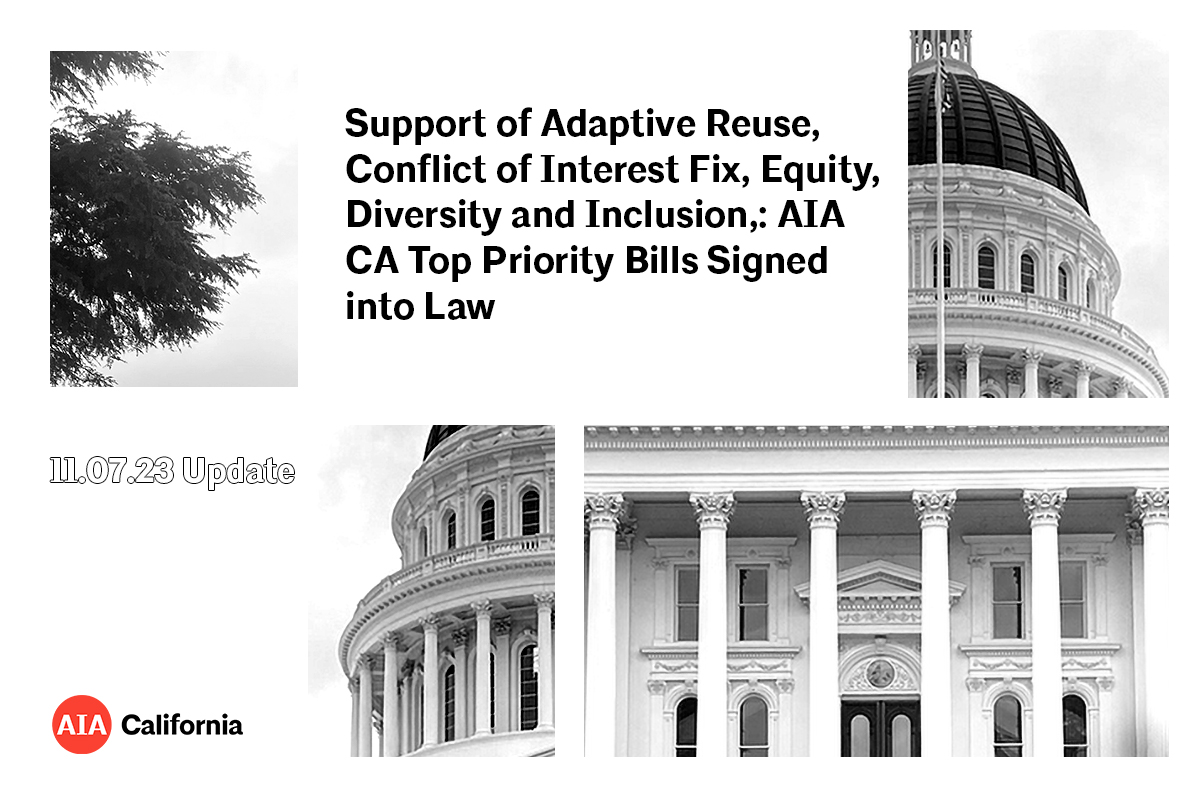
As noted in previous updates, the AIA California Board of Directors took positions on almost 60 bills introduced by the California Legislature this year that they identified as having an impact on the profession in some form. Those bills covered a wide variety of topics from adaptive reuse, to streamlined housing approvals, to embodied carbon, to permit processing, and so many more.
Additionally, we as an organization identified a few priority bills that had the most direct impact on the profession of architecture in 2023. We are happy to report that all three of our top priority bills were signed into law by Governor Newsom: AB 342 (Valencia) – Demographic Information Collections; AB 334 (Rubio) – Government Code 1090 Conflict of Interest Clarification; and AB 529 (Gabriel and Haney) – Adaptive Reuse.
Here is a deeper dive on each:
In October 2020, the Fair Political Practices Commission (FPPC) provided guidance [see https://www.fppc.ca.gov/learn/section-1090.html] to agencies and their independent contractors regarding allowable practices that the FPPC would deem to comply with GOV 1090 and not constitute a COI on the part of either party to a contract. However, prior to AB 334, complying with the FPPC’s guidance yielded no safe harbor protection for the agency nor independent contractor; this could only be achieved by requesting from the FPPC an advice/opinion letter specific to the individual project and/or contract in question [see https://www.fppc.ca.gov/advice.html].
AIA California was a part of the support coalition led by the American Council of Engineering Companies, California that pushed for the passage of AB 342, which codifies the FPPC’s guidance and grants safe harbor protections against criminal, civil, and administrative enforcement to those who abide by it.
Stay tuned for more updates on this year’s legislative results in future updates. Click here for more information on the final results on all the bills AIA CA took positions on this year. If you have any questions on any of these bills, you can reach out to AIA CA Director of Government Relations, Scott Terrell.